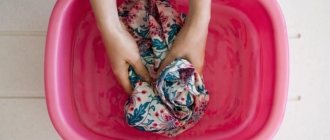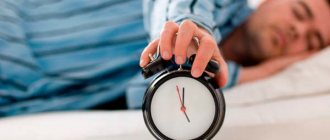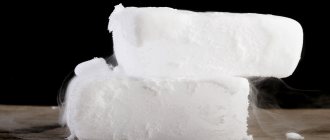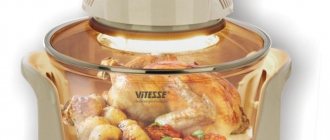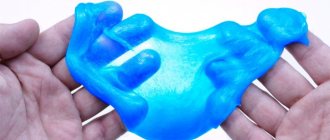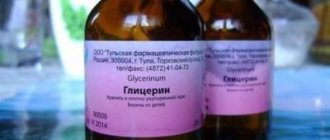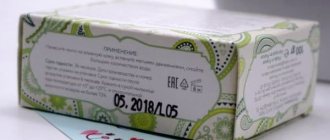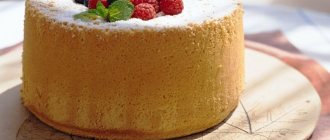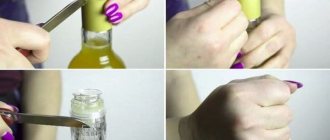Affordable and easy to use glycerin increases its use every day. The running, clear liquid will help remove stubborn grease, ink and wine stains, as well as paint and rust. Cleaning the apartment also requires this: parquet and wooden furniture will no longer collect dust. You can wear your favorite leather jacket for several more seasons by masking abrasions with glycerin. It is also an indispensable assistant in the care of dry skin, hair, rubber and glass.
The public knows about this substance that it is an organic additive made from vegetable or animal fats, used mainly in cosmetology. But this ingredient, safe for humans, has found many more uses in the household.
Glycerin substance use
Glycerin is universal, which is why it is so widely used in all sectors of human activity. It has antiseptic properties, due to which it is actively used by pharmacological factories for the preparation of medicines. Its low price makes glycerin indispensable in cosmetology, medicine and the food industry.
- In cosmetology,
glycerin is used to prepare various recipes for creams, masks and ointments as a moisturizing component.
Its protective effect allows you to save the skin from the effects of pathogenic microbes that can penetrate through microcracks and allows you to keep it fresh and healthy. But not all cosmetologists recommend it for frequent use. Due to its hygroscopicity, glycerin, on the contrary, absorbs moisture rather than giving it away, which is a stumbling block between representatives of different schools. But here we should not forget that if the surrounding air is dry, then there will be nothing for it to absorb
. - The use of glycerin in medicine
is associated with its ability to perfectly dissolve water and alcohol, thanks to which it is possible to increase the viscosity of any medicine or, on the contrary, to dilute it, that is, it protects medical ointments and pastes from drying out quickly and extends their shelf life. Various suppositories (suppositories) for rectal use are also prepared on the basis of glycerin. Sore throat - and here not a single medicine can do without it. Due to its high viscosity, it perfectly coats the mucous membranes of the mouth, which helps soothe a sore and sore throat. The antiseptic and disinfecting properties of glycerin are suitable for treating wounds and cuts. - Food grade glycerin
(
E422
) is produced only from natural oils and fats.
- In bakeries,
they process baked goods to prevent the appearance of a stale crust. - In the production of chewing gum, E422
is added to increase its viscosity; here, glycerin also acts as a sugar substitute. - Pasta and vermicelli
are treated with food grade glycerin to reduce sticking during cooking. - Chocolate
- confectioners use it when they want to make the bars more delicate in taste. - And even in the tobacco industry
they found use for it. Each cigarette is treated with food-grade glycerin to eliminate too strong an aroma.
Those products that contain E422 are stored much longer and look fresher.
Caring for genuine leather products
We invite you to get acquainted with the “folk” instructions for using glycerin for leather jackets, bags, and shoes. These wardrobe items are often cleaned; stains are removed from them using solvent, gasoline, alcohol and other aggressive degreasers. Therefore, it is not surprising that glycerin is simply irreplaceable here - after each cleaning it is necessary to treat the leather surface with this substance to make it softer and more delicate.
The substance will also help if a leather product - clothing or, for example, shoes - has been exposed to dry heat (dried near a radiator). Applying a thin layer of glycerin will moisturize the surface of the skin.
Hair Recipes
- “Lamination”
: mix heated 1 tsp olive and 1 tsp. burdock oil, add 1 tsp. glycerol, vitamin E (ampoule), stir. After 60 minutes, wash off. - Moisturizing:
take 3 tsp. glycerin, 3 tsp. apple cider vinegar (can be replaced with lemon juice), add 3 egg yolks, mix everything. The mixture is washed off with warm water. Hair masks are recommended to be done in courses: 8 sessions over 2 months. Mandatory condition: after applying the mixture, the curls are hidden under a plastic cap, and insulated with a towel on top, kept for 30-60 minutes, then washed with shampoo. - Hand bath.
Ingredients: half a liter of warm water, 2 tbsp. l. starch, 20 ml glycerol. Keep your hands in the liquid while the water is warm, then pat your skin dry with a towel. - Softening mixture for heels.
To make your heels smooth and soft again, smear them with this homemade remedy at night: mix glycerin with ammonia (1:1), apply to the skin, do not wash off. The mixture is effective, only because of the ammonia it has an unpleasant odor.
GLYCEROL. WHAT IS IT NEEDED FOR?
Glycerin is an alcohol and is a viscous, colorless, sweetish liquid with no odor. The average person is most accustomed to seeing it in medicines or among the ingredients in cosmetics. But, in fact, this substance has an incredibly wide range of uses.
1. Glycerin has found its most common use in cosmetology. It can often be found in many cosmetic products, such as creams, masks, lotions, soaps, etc. Given the emollient properties of glycerin, these are mainly cosmetics aimed at combating dry skin.
2. Practical women quickly understood the principle of action of glycerin and use it at home, bypassing industrial cosmetics. Glycerin is added to homemade face masks, creams, tonics, hair sprays, and lip balms. It is also indispensable in the treatment of cracked and rough skin on the heels. It is used with pleasure in home and technical soap making.
3. Another area where glycerin has proven itself is medicine and pharmacology. When used externally, it is used to heal and moisturize affected areas of the skin, being an excellent antiseptic. It is part of many healing ointments, gels and creams, syrups, and also increases the viscosity of some medications.
4. For internal use, glycerin is given for cough, intracranial and intraocular pressure, glaucoma, constipation. For the latter ailment, there are special suppositories that can be used from the first months of life. Glycerin has contraindications: diabetes, liver or kidney disease.
5. In the food industry, glycerin is known as a food additive - stabilizer E422. With its help, the required consistency of raw materials is achieved in the manufacture of flour and confectionery products. Glycerin is used in the production of alcoholic products, in particular liqueurs. E422 extends the shelf life of finished products.
7. In the tobacco industry, glycerin is added to tobacco. Thanks to its hygroscopic properties, it regulates humidity and removes the characteristic unpleasant smell of cigarettes. For this purpose, glycerin is also included in electronic cigarette cartridges.
8. Nitroglycerin is used in the military industry. It is used for diluting gunpowder and making explosives. Nitroglycerin is part of the fuel used to fuel large military equipment. It also helps cool gun barrels after long firefights.
9. And of course, one cannot ignore the benefits of glycerin in home life. Stains that are difficult to remove, from berries or coffee, for example, can be washed off well with a mixture of salt and glycerin in equal proportions
Add a little pharmaceutical glycerin to the water for washing floors or furniture - this will give them a fresh look and shine. Genuine leather items such as bags, jackets and shoes will last longer and look newer if they are rubbed with glycerin.
Due to its unique properties, the component described above is successfully used in the textile, leather, paper and paint industries. Glycerin is also involved in the production of plastics, resins, cellophane, detergents, and silicone candles. It is difficult to find such a universal and multifunctional substance.
How much does glycerin cost?
Glycerin received its widespread use due to its modest cost. In Russia, on average, its price ranges from 8.5 rubles to 27 rubles for a standard bottle of 25 - 40 g.
| City | Volume | Manufacturer | Price |
| Yaroslavl | JSC Samaramedprom | 14 rub. 00 kop. | |
| JSC Samaramedprom | 27 rub. 00 kop. 20 rub. 00 kop. | ||
| Tverskaya FF | 9 rubles 00 kopecks | ||
| Nizhny Novgorod | Tverskaya FF Tula FF Ivanovskaya FF | 17 rub. 00 kop. 19 rub. 00 kopecks 16 rub. 00 kopecks | |
| Krasnodar | Iodine technologies and marketing | 10 rub. 00 kop. | |
| FF St. Petersburg | 14 rub. 00 kop. | ||
| Iodine technologies and marketing | 27 rub. 70 kopecks |
The table shows the average price by region of Russia for 2016.
The benefits and harms of glycerin for the face
Like every remedy, glycerin also has its positive and negative qualities. Fortunately, the pros far outweigh the cons.
Facial benefits:
- Retains moisture in the skin.
- Helps nutrients penetrate into cells.
- Accelerates wound healing.
- Moisturizes.
- Clears pores of dirt.
- Antiseptic.
- Softens.
Moisturizing the dermis occurs due to the hygroscopicity of the substance: it promotes the absorption of moisture from the environment. If a person is inside a dry room, then glycerol draws moisture from the cells of the dermis, releasing it to the environment.
Harm of glycerol:
- The drug is used only at high air humidity, at least 60%, otherwise, instead of moisturizing, the opposite effect is obtained.
- Flushes out melanin.
- May contribute to the appearance of comedones in the presence of inflamed skin.
- In combination with silicone it causes allergic skin reactions.
- Removes tan quickly.
The more humid the air, the faster the process of saturating cells with moisture occurs.
pharmachologic effect
Mild local laxative. The area of its influence is the sphincter and the lower rectum.
What is the operating principle? A suppository introduced inside dissolves under the influence of body temperature. This triggers the glycerol release reaction. It, in turn, oxidizes and breaks down into 2 components: water and carbon dioxide. Carbon dioxide irritates the walls of the rectum, provoking its reflex compression. The movements provoke the movement of feces and the urge to defecate.
The constituent components help soften stool and create conditions for comfortable, quick bowel movements. This reduces pressure on the rectum and the risk of injury to the walls.
Fat content helps restore the walls of the rectum and retains moisture.
The fat content of glycerin suppositories has a beneficial effect on the walls of the rectum
Glycerin suppositories are a means of eliminating symptoms and solving temporary problems with bowel movements. They do not treat diseases such as hemorrhoids, dysbiosis, gastritis and other problems for which constipation is one of the unpleasant symptoms.
How long does it take to work?
The effect of the laxative begins a few minutes after the suppository is administered. The desired result in the form of an urge to go to the toilet occurs quickly within 15-20 minutes.
Method 5 for shine
To give your car a shine not only inside, but also outside, try diluting glycerin with water in the following proportion:
- 200 ml water;
- 40 ml glycerin.
The mixture must be applied to the cleaned surface of the car. After the next wash of your favorite car, dampen a slightly clean rag in the freshly prepared solution and cover the entire surface of the car, including the windows, with the mixture. Minor scratches will disappear from the surface of the body, and the paint will noticeably freshen, even the matte finish begins to shine in the sun. This product will help extend the life of your car's paintwork.
It is better to polish a car at above-zero temperatures and indoors.
We reveal the secrets of what liquid glycerin is needed for
First of all, I would like to answer a frequently asked question on our topic: what is glycerin, what is it for, and what are the features of its use in different areas of our lives? We'll talk about this in more detail. So.
Glycerin, a transparent, odorless liquid with a sweetish taste, is available in any pharmacy and costs “kopecks” - 10-15 rubles per bottle.
There are few people who have not heard of at least one way to use glycerin, but in fact this substance is universal: it is used in medicine and cosmetology; industries - food (as a stabilizer and emulsifier, E 422), chemical, textile, tobacco, military, etc.; in electrical and radio engineering, etc.
At home, glycerin can be used in different ways - it is safe, and many housewives appreciate its beneficial properties. Glycerin is an organic substance; belongs to the class of polyhydric alcohols and mixes well with ethanol and water. In nature, it is found in vegetable oils and animal fats, and our body also produces it.
Glycerin was isolated a long time ago, in the 18th century, by the Swedish chemist Karl Scheele, who noticed that the process of making soap produced a liquid that was easily soluble in water, transparent and viscous. Now this method is also used, but glycerin began to be obtained not only from fatty acids, but also from sugar, wood flour, and also (synthetic) from oil refining.
It is difficult to tell here how and in what areas glycerin is used. Women are more often interested in areas such as cooking and home treatment, cosmetology and household uses.
articles:
Use in food
In the food industry, glycerin is often used: in the production of candies, marshmallows, chocolate, pasta - for stickiness, bakery products - for fluffiness and softness; chewing gum, soft drinks.
Fashionable hair color spring 2019
To increase shelf life, dried fruits are treated with liquid glycerin, and tea and coffee are treated with liquid glycerin to impart a special taste.
But it is more difficult to buy food grade glycerin for home use, although it costs only 40-50 rubles; It is usually offered by small and large wholesale online stores.
), add glucose (½ tbsp) and glycerin (2 tsp), stir until smooth. Gradually add powdered sugar (450 g) and knead (you can use your hands) until you get a smooth and non-sticky dough.
This mastic, wrapped in film, is stored for about 2 weeks; You can add food coloring during the cooking process.
How it is used in medicine
In medicine, liquid glycerin is used externally and internally. It is prescribed externally more often for skin diseases. You shouldn’t take it orally without a doctor either, although some recipes are very popular.
For example, for constipation, it is taken by diluting it with water 1:1, at the rate of 2-3 ml for each kg of the patient’s weight (interestingly, it is taken in approximately the same way for increased intracranial pressure), or microenemas are made with it.
Pharmacy suppositories with glycerin are well known: they are considered a mild remedy, but they also have contraindications.
In general, glycerin is widely used in pharmacology: in tablets, ointments, creams, pastes, solutions, etc.
Cough recipes with liquid glycerin are also popular. Pharmaceutical highly purified glycerin is mixed equally with freshly squeezed filtered lemon juice and honey (60 ml each), stored in the refrigerator in a tightly closed glass container. Drink 1 tsp. after 2-3 hours, for coughs and sore throats: glycerin softens the mucous membrane, reduces inflammation and prevents the spread of bacteria.
Syrup with ginger is considered effective: add 1 tsp to the indicated ingredients. fresh grated root. But first, the ginger is simmered for 10 minutes over low heat along with the juice, and then mixed with honey and liquid glycerin. They accept it the same way.
Cholecystitis is treated with a warm (40°C) mixture of glycerin with olive oil (1 tablespoon each) and the same lemon juice (from the whole fruit). They drink immediately after waking up in the morning, turn on their right side and lie for half an hour, then another half hour on their back.
Removing stains
The most popular way to use the properties of glycerin is to combat accidentally formed stains. This polyhydric alcohol can literally save clothes from a variety of stains:
- from tea and coffee;
- berries and wine;
- ingrained fat;
- rust;
- gouaches;
- ink.
Often the use of glycerin is much more effective than expensive powder. This colorless substance itself will not leave a mark on the fabric; it will be washed off without residue with water, so it can be used even for light-colored items.
Advice
Old greasy stains that glycerin was unable to overcome can be destroyed by combining the substance with ammonia.
Let's take a look at some recommendations that will help you quickly solve the problem of heavy pollution.
What is it used for?
Glycerol is used to treat skin diseases, as a laxative, in the production of cosmetics, household chemicals, and personal care products.
At home, it is necessary for making:
- Mask.
- Soap.
- Balzamov.
- Lotions.
- Medicinal ointments.
- Warm baths for hands and feet.
- Other cosmetics.
Homemade cosmetics with glycerin help improve the condition of the epidermis, nails, and hair. They become healthy, shiny, soft.
In everyday life, glycerol will help get rid of berry, tea or coffee stains. To do this, you need to rub the dirt with an undiluted substance, and after an hour, wash it off. You can get rid of annoying dust that constantly settles on furniture by wiping the surfaces with an aqueous solution with glycerin.
In the food industry it is known as additive E-422.
Pollution from fatty foods
How to use glycerin to the maximum in everyday life? Use to get rid of traces of grease on any fabrics and surfaces of upholstered furniture.
To remove canning and fish stains, you need to wipe the area with a soap solution, then soak the fabric in heated glycerin and leave for an hour. Then wash or rinse the item.
You can get rid of a stain on the sofa by dissolving 10 ml of ammonia and glycerin in a glass of water. After saturating the surface with the composition, you should place a clean white cloth on it (it is better to take satin or chintz) and iron the contaminated area with an iron.
How to make a mixture for different bubbles at home
There are a lot of recipes for making soap bubbles, since usually successful mixtures are obtained experimentally.
A simple recipe with a minimum of ingredients
To prepare, you only need three components:
- soft water (boiled, melted or distilled) – 300 ml;
- “Fairy” detergent - 100 ml;
- glycerin - 50 ml.
Cooking process:
- Pour the required amount of warm water into the basin.
- Pour in Fairy.
- Add glycerin.
- Mix everything carefully without raising foam.
- Let it sit in the refrigerator for 24 hours.
The mixture is ready, you can blow bubbles.
A simple way to make soap bubbles - video
https://youtube.com/watch?v=7XxrsyFhFs8
Recipe using sugar and baking powder
We use the following components:
- distilled water - 300 ml;
- soap base - 50 ml;
- glycerin - 25 ml;
- granulated sugar - 5 teaspoons;
- baking powder - 1 teaspoon.
The process of preparing the mixture for soap bubbles:
- Pour sugar and baking powder into the bottom of the container.
- Add glycerin.
- Pour in detergent.
- Fill all components with water.
- Mix thoroughly without foam and leave to infuse for 12 hours.
After the soap film has become dense and solid, the bubbles are ready.
Soap bubbles with sugar - video
Recipe for giant soap bubbles
Ingredients and their proportions:
- distilled water - 400 ml;
- “Fairy” dishwashing liquid – 100 ml;
- glycerin –75 ml;
- sugar –5 teaspoons;
- gelatin – 5 teaspoons.
Cooking process:
- Soak the gelatin and let it swell.
- Strain the gelatin and drain off excess water.
- Melt the gelatin and sugar mixture on the stove, but do not boil.
- Fill everything with water.
- Add detergent and stir.
- Leave to infuse for a day.
The mixture made according to this recipe produces large and strong bubbles.
Giant soap bubbles - video
There are a huge number of recipes for making soap bubbles on the Internet. They are often similar in their set of components, less often in their proportions. The main thing in cooking is to follow the basic recommendations and be ready to experiment. There is no universal recipe for soap bubbles, find the one that suits you best and perfect it!
For cottages, agriculture
A solution of glycerin and water is used to prevent diseases and pests. For 10 liters of water you need to take 100 ml of product. The resulting solution is watered over the plants.
To get rid of parasites, a different solution is used: 100 ml of product is taken per 1 liter of water. You need to spray the plant with this solution or, if possible, wipe all the leaves.
The procedure must be carried out several times with a break of a week until the parasites are completely eliminated.
In agriculture, this product is used to treat seeds. This is done to ensure that they germinate stably.
Instructions for use
Since the article deals with external use, we will omit the effect on the functioning of internal organs, body systems and the associated nuances of use.
The drug is prescribed for:
- Softening the skin.
- Treatments of mucous membranes.
- Elimination of dry skin, hair, dehydration of the dermis.
- Treatment of acne, bedsores, diaper rash (treated with undiluted substance) or cracked heels.
- For thrush, tonsillitis or pharyngitis (douching and rinsing with a diluted drug).
It acts as a dermatoprotector, filling in and smoothing out fine wrinkles, which plays an important role in the manufacture of anti-aging masks. In addition to glycerol, they may include vitamins E, B1, ascorbic acid (stimulates collagen formation).
Glycerin in cosmetics is used to care for:
- Skin of the face, hands, feet.
- With fingernails.
- Hair.
Contraindications for the use of glycerol:
- Lactation.
- Pregnancy.
- Individual intolerance (manifests in the form of allergic reactions).
- Open wounds, other violations of the integrity of the skin (may strongly sting or burn).
For internal use, there are an additional number of contraindications, so you should carefully read the official instructions.
It is not recommended to use undiluted glycerin: it can cause itching, peeling, and dehydration of the skin.
Combine with water (including mineral water), oils, vitamins, herbal infusions, and other useful diluents. In the composition of cosmetics it should not exceed 5% (subject to home preparation) or it should appear further than the fifth position on the packaging of a purchased product.
Try to add alternative sources of moisture to your home cosmetics:
aloe, yolks, pulp or juices of fruits, berries, vegetables. Don't forget to maintain air humidity: spray water with a spray bottle in the room where you are.
How to make glycerin at home
Those who want to try themselves as an industrial manufacturer can be offered to make glycerin at home
.
It is not difficult to prepare, but you need to be careful
when working with dangerous chemicals.
- First of all, you will need fat (2 kg). It can, of course, be taken from meat products such as beef or pork. The carcass must be thoroughly cleaned of skin and tendons; the remaining meat can be used for cutlets.
- The fat needs to be melted over low heat.
- Carefully add alkali (345 mg) to the melted fat. This must be done with gloves, as alkali is extremely dangerous.
- When it all melts, stir and cool to 35 degrees.
- Now add salt to the solution and continue stirring until a thick syrup forms on the surface. When the syrup appears, there is no need to stir anymore.
- The syrup that has formed in the upper part of the pan is soap and it can also be useful to you around the house. And the liquid that remains at the bottom of the pan will be your homemade glycerin.
- Once the glycerin has cooled, pass it through a fine sieve to clean.
When you add lye
, the temperature of the mixture will rise sharply, be careful, this can be dangerous!
Glycerin-based face masks
Representatives of the fair sex are well aware of glycerin as an important component of nourishing masks.
.
Here are some easy recipes:
- For problematic dry skin,
a mask with potatoes and milk is suitable. For 1 boiled potato, take 1 tbsp. a spoonful of oil (olive), 1 egg yolk and 1 teaspoon of honey, a little milk. We thoroughly grind and mix all this. Dissolve glycerin in warm water in a ratio of 1:2 and add it to the resulting slurry last. Apply this mask to the face and décolleté for no more than 15 minutes, then wash off. - For oily skin,
it is good to prepare a mask from any cosmetic clay. To do this, mix 5 mg of glycerin with two tablespoons of boiled cold water and add enough clay to obtain a creamy mass. 15 minutes will be enough to get your skin in order.
Color change
To lighten by half a tone and maintain the selected shade, you can also use glycerin. How to make a mixture for transformation at home, we will find out further:
- Pour two tablespoons of chamomile flowers with hot water and leave for two hours. Strain the mixture and pour 60 ml of glycerin into it. Apply to hair, keep covered for 40 minutes, then rinse thoroughly.
- Beat an egg, add 10 ml of lemon juice, 50 ml of low-fat kefir, and pour in three tablespoons of heated glycerin. Distribute the product over damp hair for 30 minutes.
